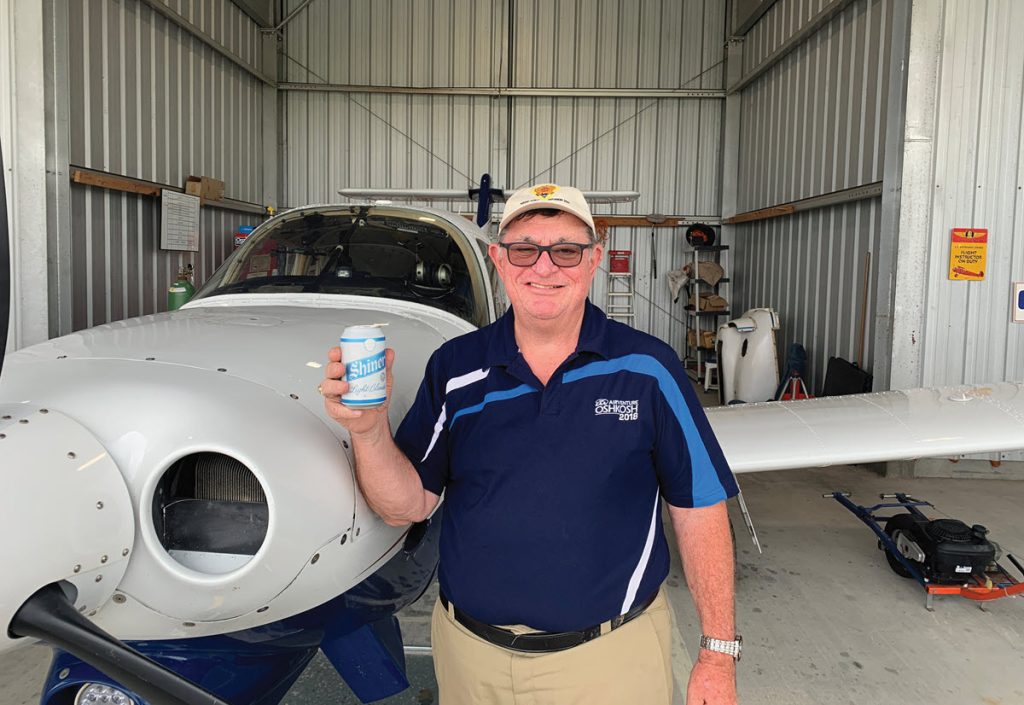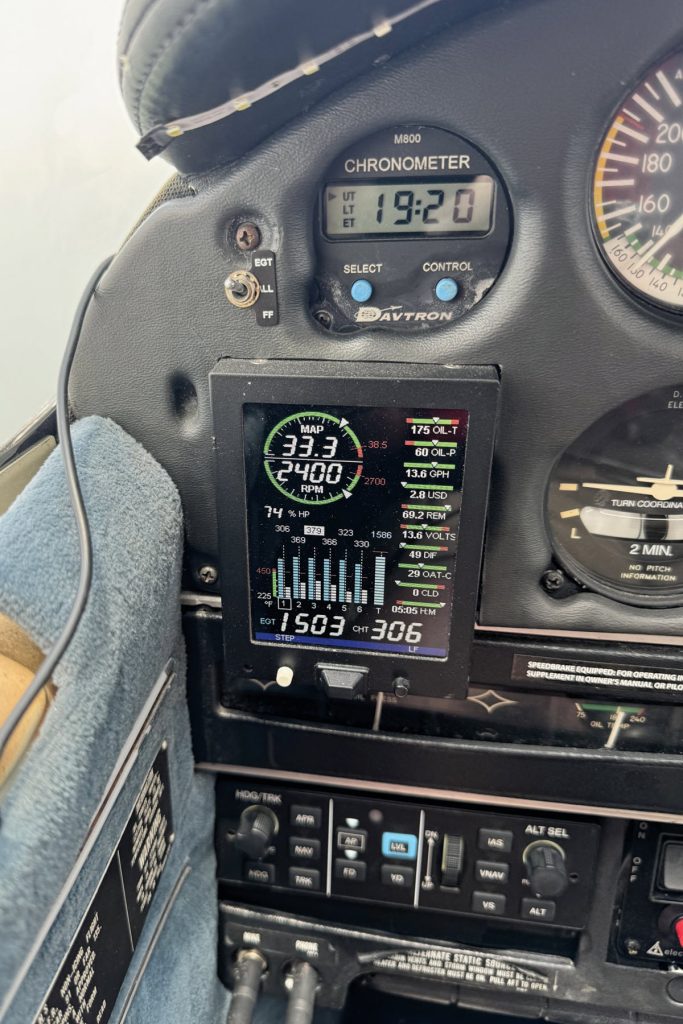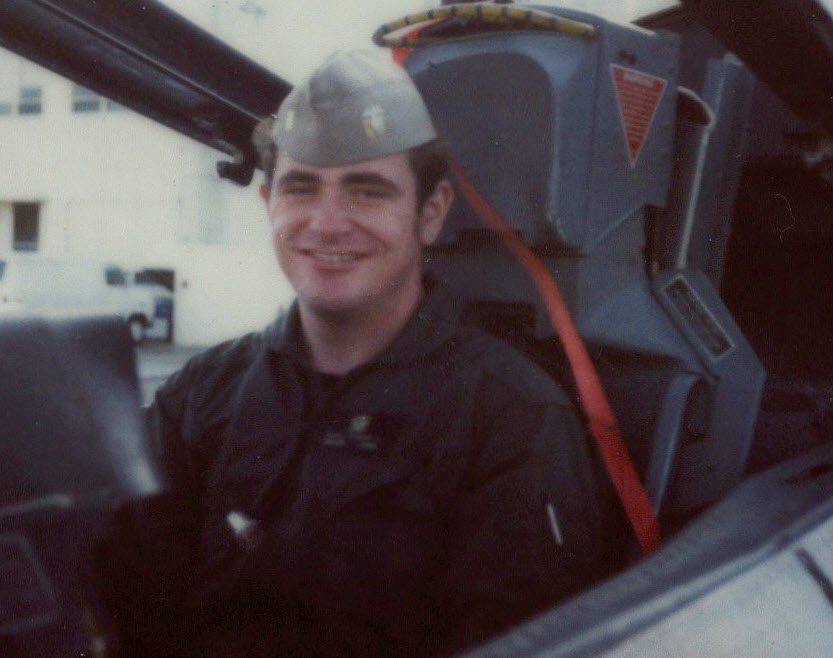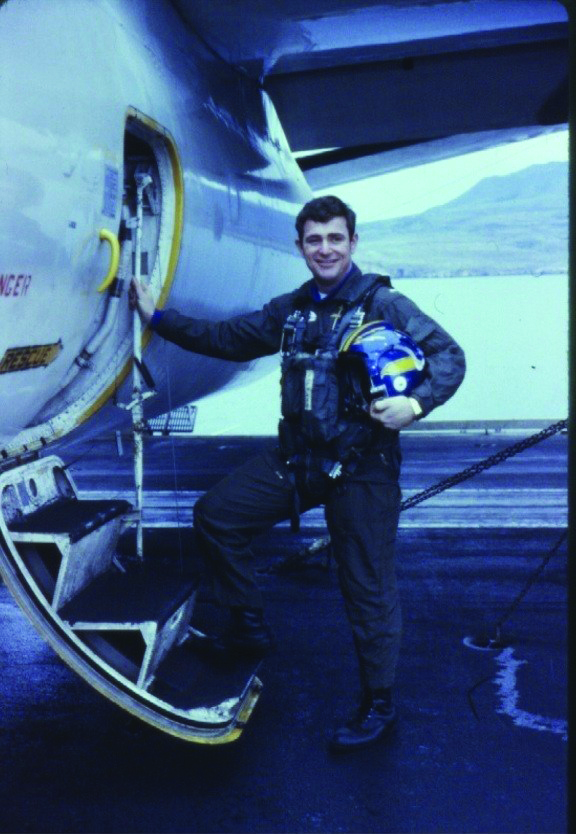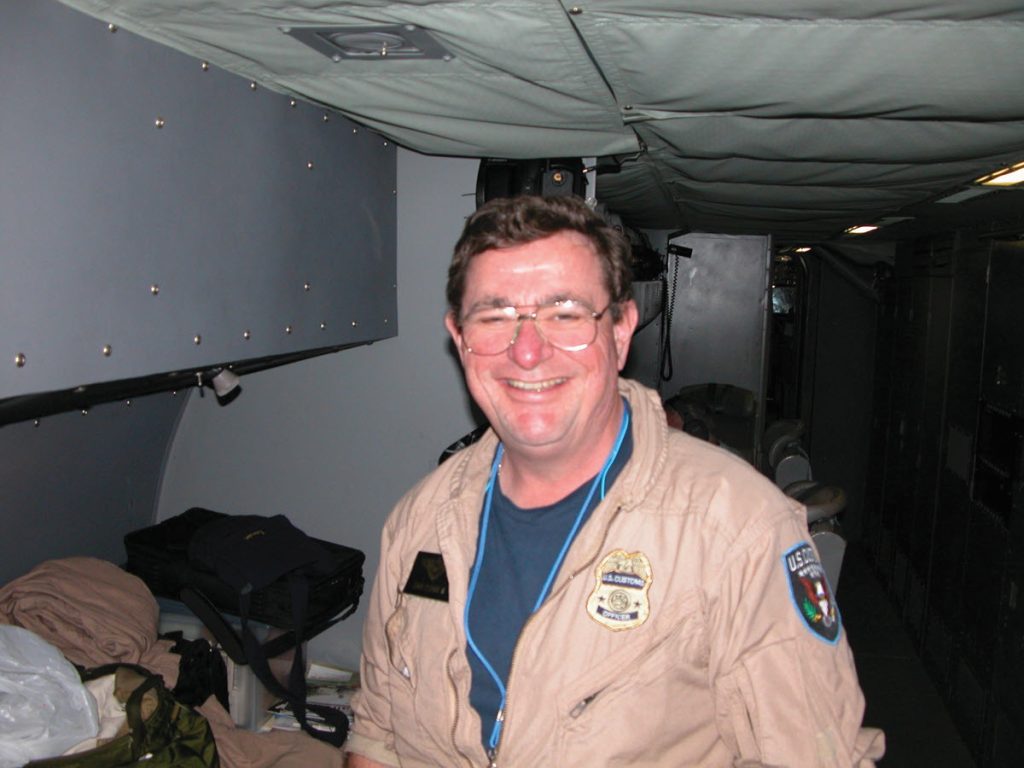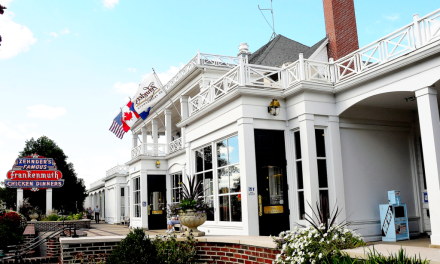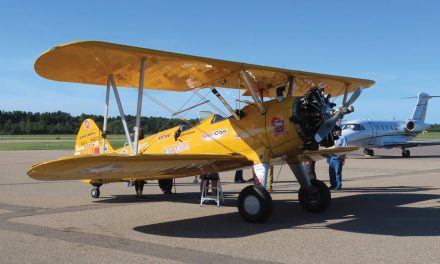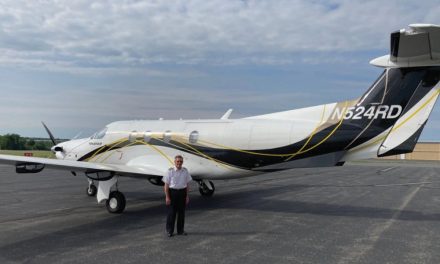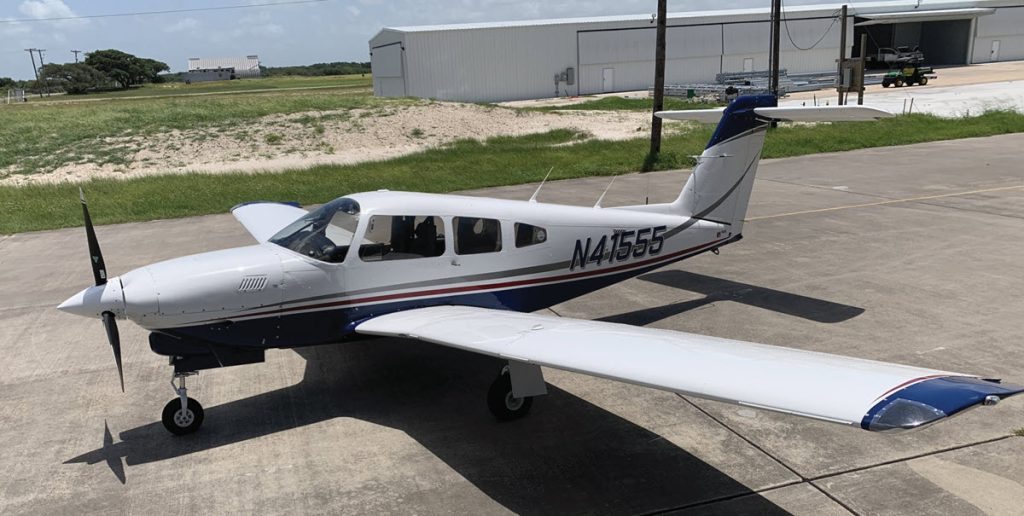
By Michelle Adserias
John O’Leary had a decision to make. The engine on his 1980 Piper Turbo Arrow IV, with a T-tail, had 2800 hours on it with a TBO at 1800 hours. It hadn’t been overhauled since 1995. Should he have someone work on the current engine or install a new one? Since he flies 80-100 hours each year, he decided an engine replacement was the best option for him.
He ordered a factory-new Continental TSIO-360FB1B engine on November 15, 2023, a decision that would renew his aircraft’s life for years to come. John put 20% down on the $78,000 engine then sent it off to be built and tested. Replacing, rather than overhauling, his engine allowed John to continue flying while he waited. His engine was delivered on April 18, 2024, and it took the mechanics about three weeks to install and test the engine. John has about 20 hours on it, so far, and everything is running smoothly.
Five months seems like a long wait, but John assured me it wasn’t bad at all. One of his students had his Cessna Skylane RG engine overhauled. The work on his plane also began in November 2023. He just got his Skylane back in May 2024 – and was grounded for six months.
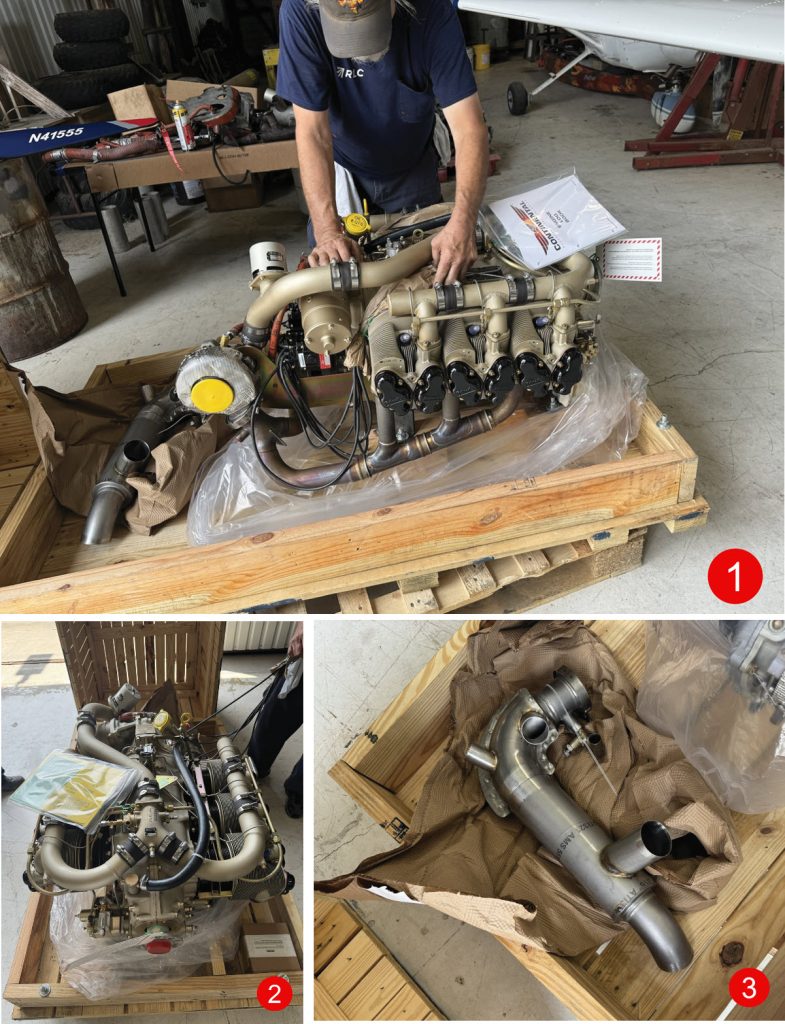
Other Upgrades
John O’Leary’s Piper Turbo Arrow IV was first purchased in 1980 by a Canadian citizen. The plane was then purchased by three men in Schaumburg, Illinois and lived there for nearly 30 years before John learned it was for sale. Based on his research, he knew the existing modifications made it a good, solid airplane. An intercooler and a Merlyn Black Magic, an automatic turbocharger wastegate, had already been installed.
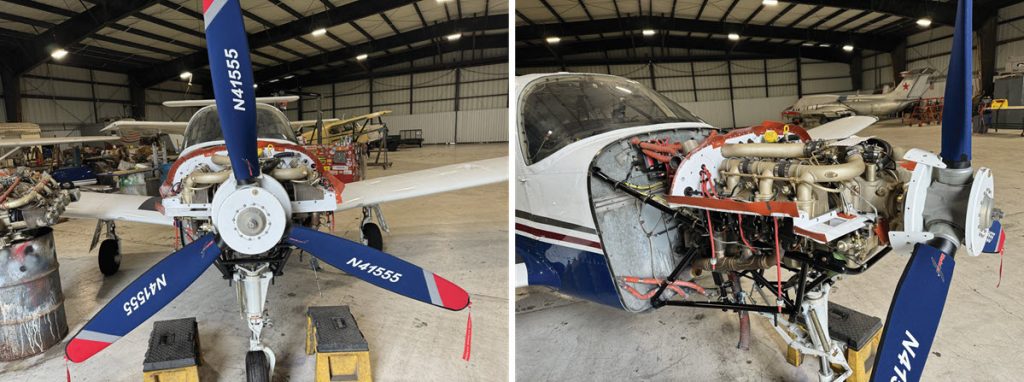
When John discovered the propeller hadn’t been removed and serviced for 20 years, and was overdue for an overhaul, he asked the owner to service it before selling. In the end, they agreed to a price reduction instead. When the mechanic removed the propeller, he discovered damage to the hub due to a prop strike in 1995. At the time, the damage was considered acceptable, but changes in the standards now demanded it be repaired. John used the money taken off the purchase price to repair the hub. Then he purchased a new composite propeller which weighs 20 pounds less than his old aluminum one. Fortunately, he was able to sell his old propeller for $7,000.
This aircraft needed some additional upgrades, as well. It still had its original 1980 avionics, so John had a Garmin GPS 650 ISI, Garmin radios, two Garmin G5’s and a Garmin 500 autopilot installed. He also replaced the cowling, put new speed brakes on it and installed new wing tips from Knots2U. Then it got a new paint job.
The only snag John ran into during these renovations was finding a new avionics master relay. When he contacted Piper, they explained the vendor was no longer making the part and they were unable to help. He finally tracked one down at Preferred Airparts – the very last one they had available.
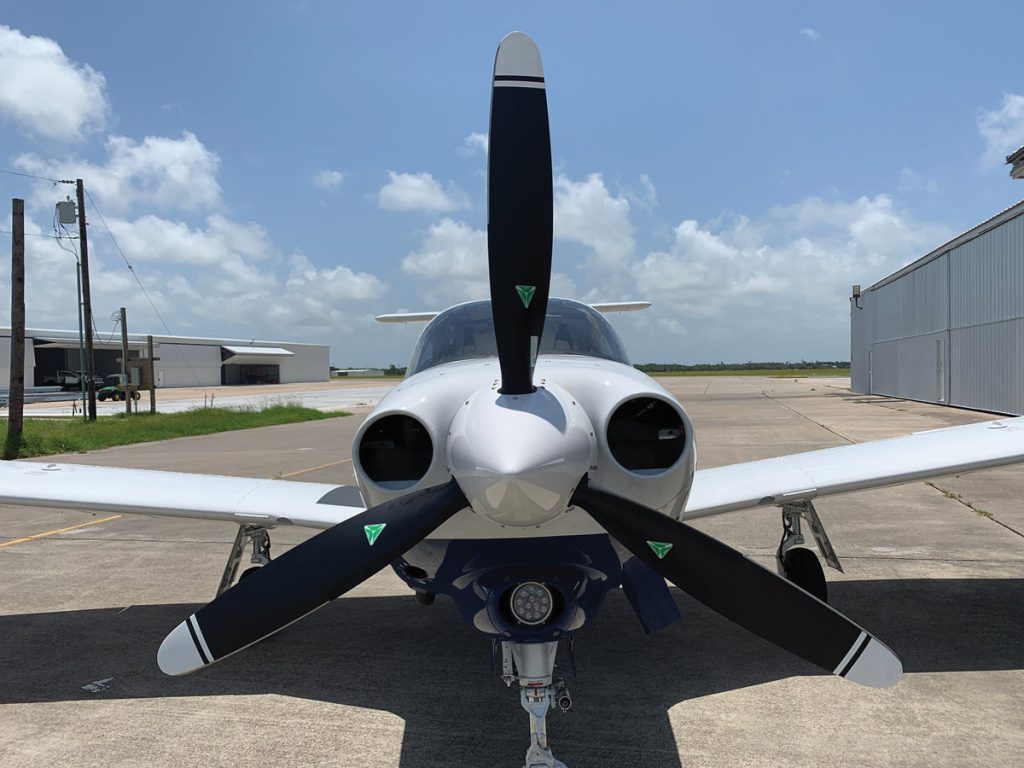
N41555’s “Evil Twin”
Once John had ownership of the airplane, he decided to apply for a more personal N number. He decided on N41555. In 2013, the FAA decided to re-register all airplanes in an effort to get inactive planes, and their N numbers, off their active rolls. John confirmed the number he wanted was available and reserved it. It was then assigned to his Piper Turbo Arrow T-tail.
Shortly after, he received a letter from San Bernadino County Airport Authority saying he owed them money. The plane originally known as N41555, a Piper Warrior, was tied down at their airport and the fees hadn’t been paid. John soon discovered the Piper Warrior’s number had not been re-registered. Though the number was available, the fact it had formerly been assigned was causing some issues.
John assured the airport authority he had never owned a Piper Warrior and had never been to San Bernadino, let alone stored something there. He then got the FAA involved to avoid any further confusion. The FAA representative discovered the airplane had been sitting unused for about 20 years. The owner had simply abandoned it and it was no longer air-worthy.
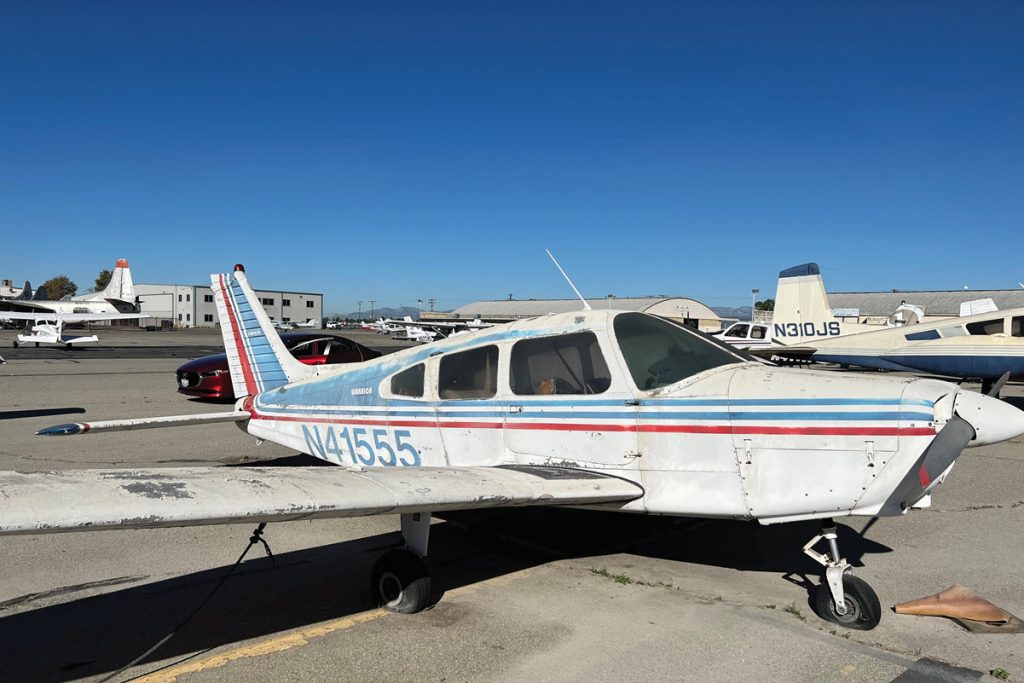
On Mission
Prior to purchasing his Turbo Arrow, John owned a Piper Seneca. In 2017, Hurricane Harvey passed directly over the airport at Rockport, Texas. John’s hangar collapsed during the storm and crushed the Seneca.
There have been some trade-offs with his new purchase. The Seneca was roomier than his Turbo Arrow, something he misses at times. “As you get older, the cockpits get smaller,” John said tongue-in-cheek. On the plus side, the Turbo Arrow flies at only five knots slower but uses 40 percent less fuel.
John’s mission has changed slightly with his new aircraft, too. With his Seneca, he would fly up to three patients at a time to medical facilities in cooperation with Angel Flights, a non-profit organization that arranges free air transportation for people needing medical care at a distant hospital or clinic.
The Turbo Arrow’s smaller cabin meant he had to adjust his Angel Flight missions. Now, rather than flying people, John flies blood vials from the Corpus Cristi Blood Bank to Houston about once a month.
Most of his airtime, however, keeps him in touch with the people and places he cares about most.
Fascination with Flight
John’s father built his childhood home under the final approach path for Runway Seven at Mitchell Field in Milwaukee, Wisconsin. As a child, John would watch the airplanes fly over while he helped his mother hang clothes on the line. It was here his interest in flying began.
During his high school years, John worked at Target and used his earnings to pay for flying lessons at Mitchell Field’s Aerodyne Flight School, which is no longer in business. He hoped to complete his PPC before finishing high school, and nearly did. He received his certificate in September of the same year, the same day he began studying geology at UW-Milwaukee.
Shortly after earning his degree, John reported to U.S. Navy Aviation Officer candidate school in Pensacola, Florida. After commissioning and finishing flight training, he flew for the Navy for 10 years. His duties included landing and taking off from an aircraft carrier, something he’d be less willing to do these days.
John then transferred to the U.S. Coast Guard and flew with them the next 13 years. In 2002, after retiring from the military, he was hired by Customs and Border Protection and flew for them for the next 20 years. In May of 2023, he received the Wright Brothers Master Pilots Award.
Though he has retired as a professional pilot, he is an active private pilot. John flies back to Wisconsin regularly to visit family and take in AirVenture in Oshkosh. He usually flies into Racine, where his sister lives, and travels north from there, since he prefers smaller, quieter airports.
John’s cross-country flights include Norfolk, Virginia for simulator training and trips to Pensacola and Orlando for visits and reunions with his friends from the Coast Guard and Navy when he has an opportunity.
Locally, he enjoys flying into Gulf Coast Regional Airport (KLBX) where they have a very good restaurant. He also likes landing at Ellington Airfield, a former Air Force base, when visiting the Houston area. He avoids the larger, busier airports whenever possible.
As John gets older, he is ever more aware of his own mortality. He looks back at some of his dangerous ventures as a pilot for the military and is quite certain he would no longer take those risks. When asked if he had any parting words for our readers, he simply said, “Be safe.” Excellent advice!
